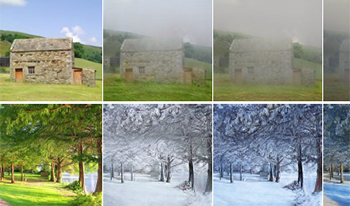
The detection of the contaminants in daily food and drinking water is crucial for global public health. For heavy metals detection of Mercury (Hg) and Arsenic (As), our group has proposed a novel paper-based and microfluidic device integrated with a mobile phone and an image analysis pipeline to capture and analyze the sensor images on-site. Still, the detection of lower contamination levels remains challenging due to the small number of available data samples and large intra-class variance of our application. To overcome this challenge, we explore traditional data augmentation and GAN-based augmentation techniques for synthesizing realistic colorimetric images; and we propose a CNN classifier for five-contamination-levels classification. Our proposed system is trained and evaluated on a limited dataset of 126 phone captured images of five contamination levels. Our system yields 88.1% classification accuracy and 91.92% precision, demonstrating the feasibility of this approach. We believe that this approach of training deep learning models on limited detection images datasets presents a clear path toward phone-based contamination-levels detection.

In this work, we study the effectiveness of prior re-sampling approaches for imbalanced image classification. We propose to investigate inter-class and within-class characteristics and conduct class specific extrapolation re-sampling for optimal imbalanced learning.

This paper presents an evaluation of how data augmentation and inter-class transformations can be used to synthesize training data in low-data scenarios for single-image weather classification. In such scenarios, augmentations is a critical component, but there is a limit to how much improvements can be gained using classical augmentation strategies. Generative adversarial networks (GAN) have been demonstrated to generate impressive results, and have also been successful as a tool for data augmentation, but mostly for images of limited diversity, such as in medical applications. We investigate the possibilities in using generative augmentations for balancing a small weather classification dataset, where one class has a reduced number of images. We compare intra-class augmentations by means of classical transformations as well as noise-to-image GANs, to interclass augmentations where images from another class are transformed to the underrepresented class. The results show that it is possible to take advantage of GANs for inter-class augmentations to balance a small dataset for weather classification. This opens up for future work on GAN-based augmentations in scenarios where data is both diverse and scarce.